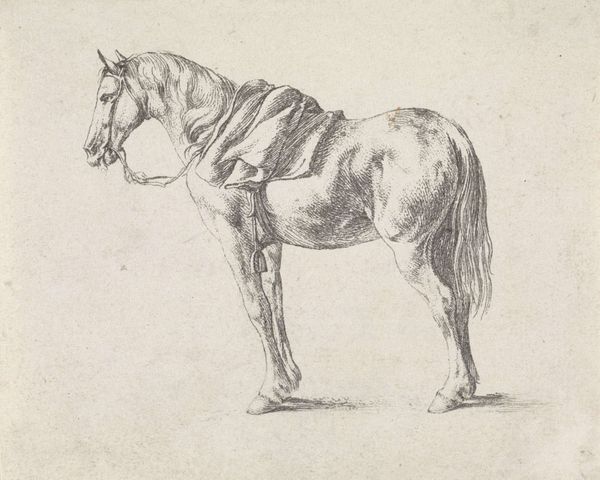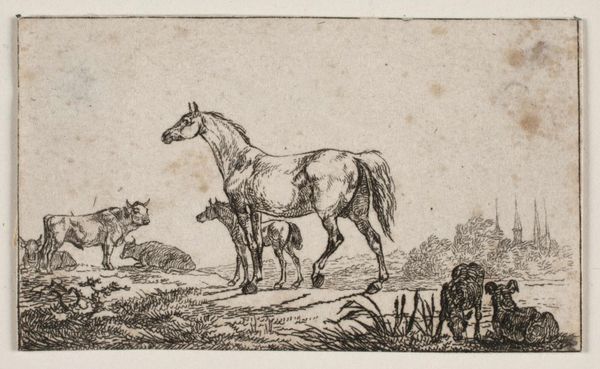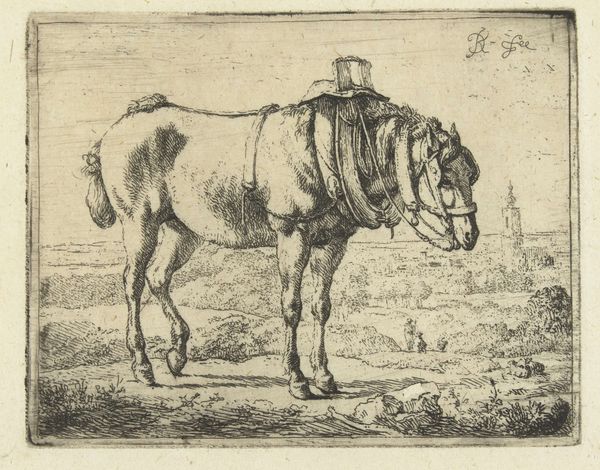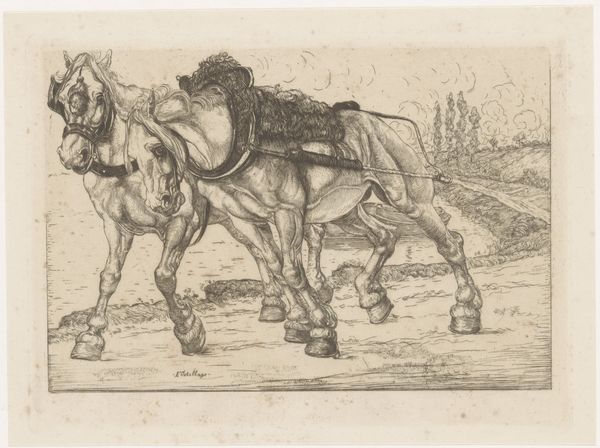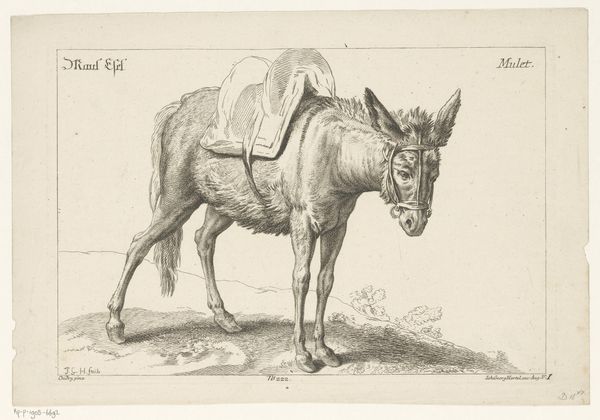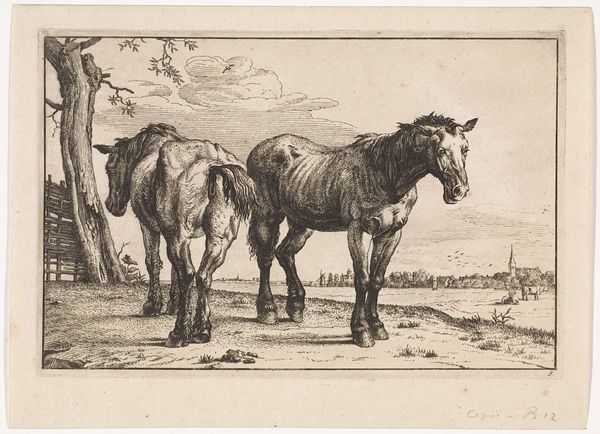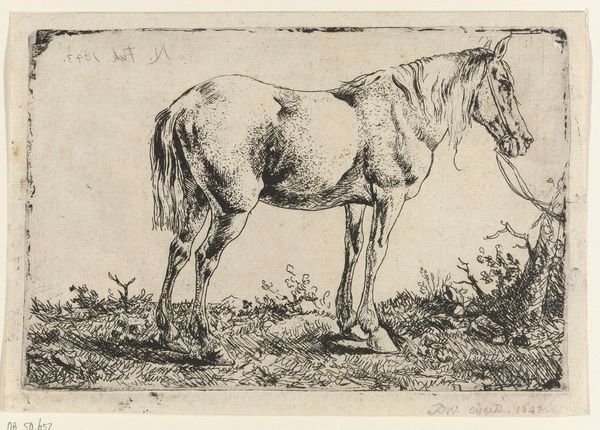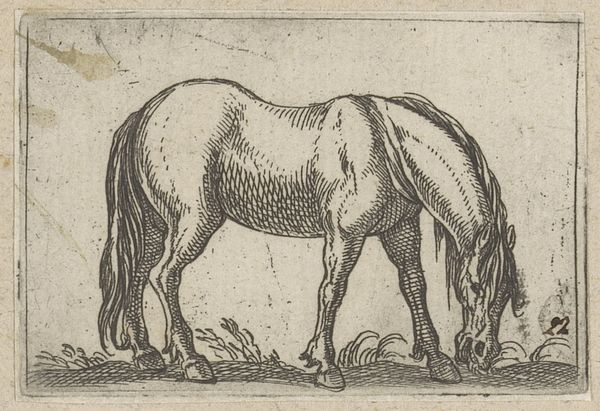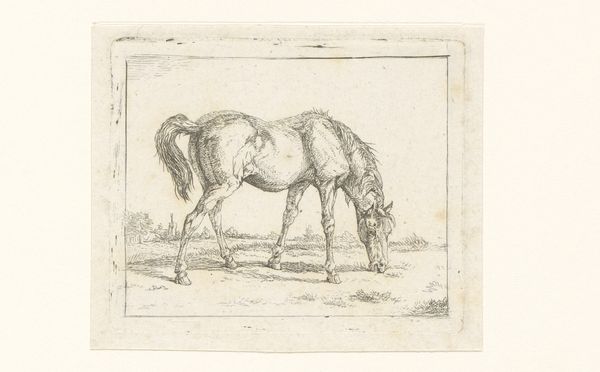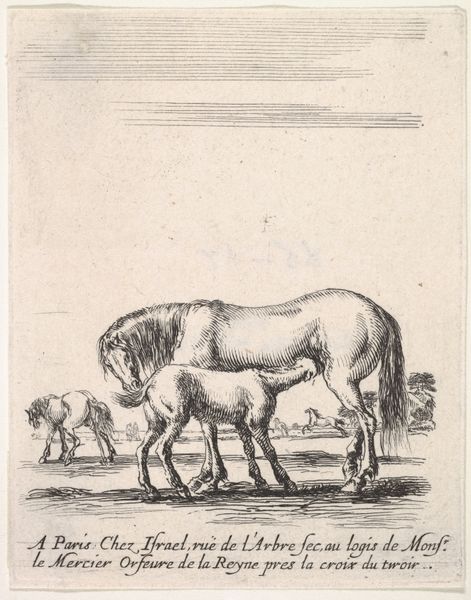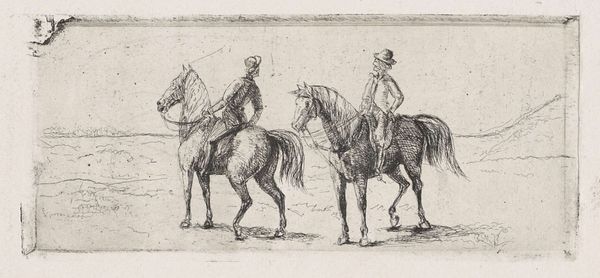
drawing, ink
#
drawing
#
ink drawing
#
baroque
#
animal
#
pen illustration
#
pen sketch
#
landscape
#
figuration
#
ink
Dimensions: height 177 mm, width 211 mm
Copyright: Rijks Museum: Open Domain
Editor: Here we have Govert Flinck's "Horse of the Good Samaritan," created between 1640 and 1643, rendered in ink. The sketch-like quality of the drawing gives it an immediacy, but there’s also something melancholic about the animal's posture. How do you see this drawing, especially considering the biblical reference? Curator: That melancholic posture speaks volumes, doesn't it? It asks us to consider the unseen narratives embedded within the Good Samaritan parable. While the story focuses on human compassion, Flinck gives us the horse—an active participant in acts of kindness. It's a fascinating intersectional moment. What does it mean to consider the agency, or lack thereof, of the animal in this scene of purported virtue? How does power play out not just between the humans, but between human and animal? Editor: So, it’s more than just an illustration of a bible story? Curator: Absolutely. It's a Baroque drawing, yes, but let's also see it as a point of entry for discussing power dynamics. Who benefits from the Samaritan's charity, and at whose expense? What social and economic structures enable such acts of 'kindness'? Does the horse have a choice? Flinck's decision to center it within this well-known parable allows a moment to consider a re-evaluation of our anthropocentric views. Editor: I never considered it that way. Thank you. Curator: My pleasure. It's vital to challenge ingrained narratives, and art like this allows us to ask difficult, essential questions about empathy, exploitation, and justice, expanding beyond humanity to non-human entities.
Comments
No comments
Be the first to comment and join the conversation on the ultimate creative platform.

